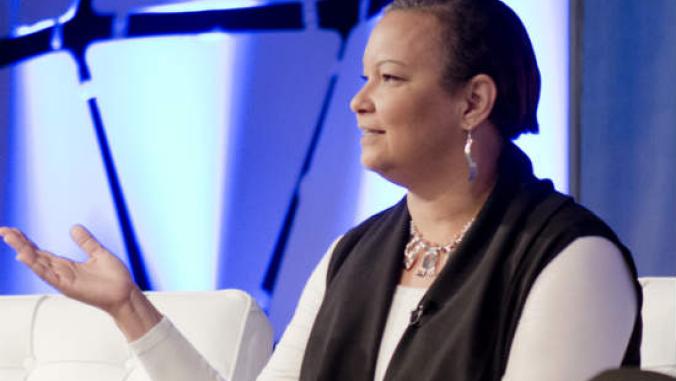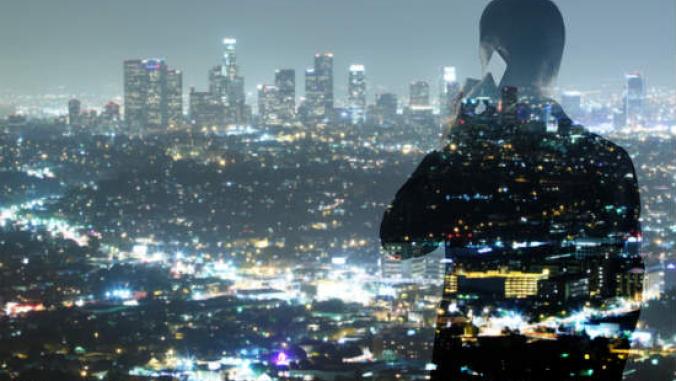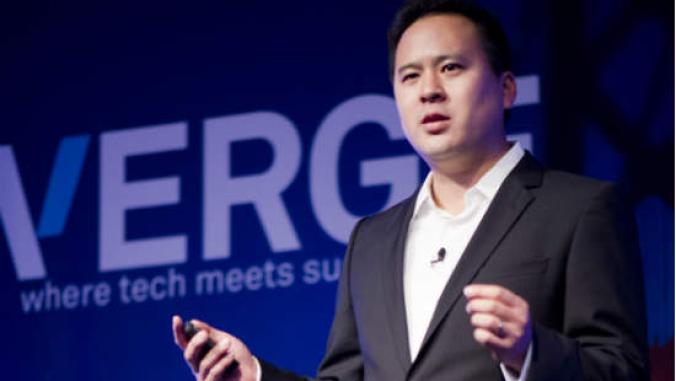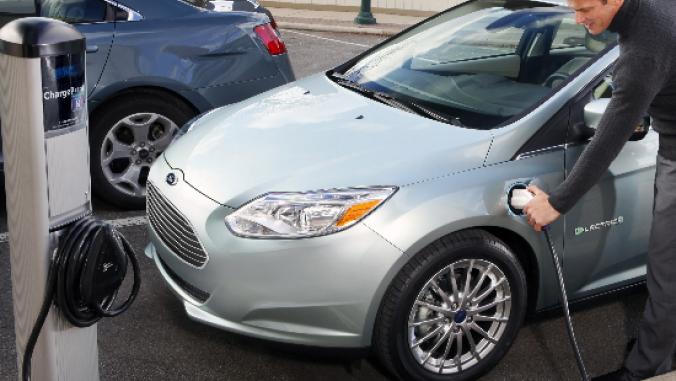Green Branding is Necessary, Presents New Challenges
As corporate social responsibility grows, companies are struggling to find the right way to brand their green efforts. A series of workshops aims to show what's effective.

Gap, Inc. created a Code of Vendor Conduct in 1996, laying out what conditions a factory has to meet to get Gap's business, but it wasn't until 2004, when there were concrete results and challenges Gap could point to, that the company spoke about the Code to its stakeholders.
That long wait embodies part of Gap's approach to branding its environmental efforts: being cautious about the information it puts out, yet remaining transparent about its efforts.
"It's more of when it's right for us as a company and when it's right for the consumers," said Kindley Walsh Lawlor, Gap's senior director of strategic planning and environmental affairs, and the keynote speaker at the Branding for Sustainability workshop in San Francisco yesterday.
The event is the first in a three-part series on the intersection of branding, marketing, green initiatives and corporate social responsibility. Panelists spoke about where sustainability branding is headed, how green brands can exist within larger companies and how companies are altering their branding in different ways.
Long-standing companies that have never had green issues at their cores are experiencing more difficulty in transitioning their messages, said Raphael Bemporad, co-founder and principal of branding firm BBMG.
Wal-Mart's critics, for example, were not immediately or easily won over when the company began delving into issues like eliminating waste, redeveloping packaging and transitioning to renewable energy. But Wal-Mart has made a concentrated effort to keep green at the top of its message. While some companies like Wal-Mart are changing their overall brand, some are taking smaller measures.
GE's Ecomagination line has received criticism because it is such a small part of GE's overall operations, said Chris Guenther, client services manager at consulting firm SustainAbility. But GE knew it would not be able to change all of its products at the same time, he said, and the Ecomagination line has actually experienced better growth than the rest of the company and led the way for GE to improve more and more products.
Others have tried to buy sustainability, such as Clorox's purchase of Burt's Bees. While many look at that purchase with a wary eye, such a situation can be vastly positive, Guenther said. The purchase means the larger company is interested enough in the smaller one to gobble them up, and the situation gives the greener partner a way to influence the other's operations.
Gap, Inc., which encompasses Old Navy and Banana Republic, works with its own companies to develop branding targeted to its different audiences. More than a year and a half ago, Banana Republic started talking about how to start a sustainability push, Walsh Lawlor said.
Starting with products, Banana Republic developed an entire line of clothes using materials like bamboo and organic cotton, and then it began to closely examine its store operations. Throughout all of its efforts, though, Banana Republic made green a subtle part of its branding, adding a small "Environmental Efforts" link to its website and using a green elephant logo to identify sustainable products and packaging. The company is planning to expand its efforts to more products and stores, but it's not planning to heavily market its sustainable actions, Walsh Lawlor said.
The next Branding for Sustainability workshops are Sept. 22 in Austin, Texas, and Oct. 20 in New York.
That long wait embodies part of Gap's approach to branding its environmental efforts: being cautious about the information it puts out, yet remaining transparent about its efforts.
"It's more of when it's right for us as a company and when it's right for the consumers," said Kindley Walsh Lawlor, Gap's senior director of strategic planning and environmental affairs, and the keynote speaker at the Branding for Sustainability workshop in San Francisco yesterday.
The event is the first in a three-part series on the intersection of branding, marketing, green initiatives and corporate social responsibility. Panelists spoke about where sustainability branding is headed, how green brands can exist within larger companies and how companies are altering their branding in different ways.
Long-standing companies that have never had green issues at their cores are experiencing more difficulty in transitioning their messages, said Raphael Bemporad, co-founder and principal of branding firm BBMG.
Wal-Mart's critics, for example, were not immediately or easily won over when the company began delving into issues like eliminating waste, redeveloping packaging and transitioning to renewable energy. But Wal-Mart has made a concentrated effort to keep green at the top of its message. While some companies like Wal-Mart are changing their overall brand, some are taking smaller measures.
GE's Ecomagination line has received criticism because it is such a small part of GE's overall operations, said Chris Guenther, client services manager at consulting firm SustainAbility. But GE knew it would not be able to change all of its products at the same time, he said, and the Ecomagination line has actually experienced better growth than the rest of the company and led the way for GE to improve more and more products.
Others have tried to buy sustainability, such as Clorox's purchase of Burt's Bees. While many look at that purchase with a wary eye, such a situation can be vastly positive, Guenther said. The purchase means the larger company is interested enough in the smaller one to gobble them up, and the situation gives the greener partner a way to influence the other's operations.
Gap, Inc., which encompasses Old Navy and Banana Republic, works with its own companies to develop branding targeted to its different audiences. More than a year and a half ago, Banana Republic started talking about how to start a sustainability push, Walsh Lawlor said.
Starting with products, Banana Republic developed an entire line of clothes using materials like bamboo and organic cotton, and then it began to closely examine its store operations. Throughout all of its efforts, though, Banana Republic made green a subtle part of its branding, adding a small "Environmental Efforts" link to its website and using a green elephant logo to identify sustainable products and packaging. The company is planning to expand its efforts to more products and stores, but it's not planning to heavily market its sustainable actions, Walsh Lawlor said.
The next Branding for Sustainability workshops are Sept. 22 in Austin, Texas, and Oct. 20 in New York.





